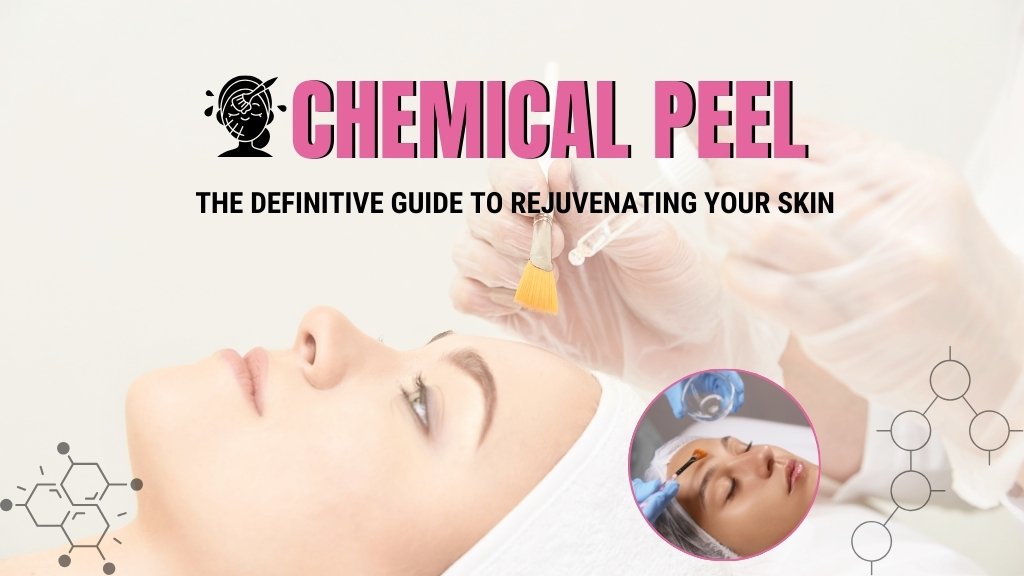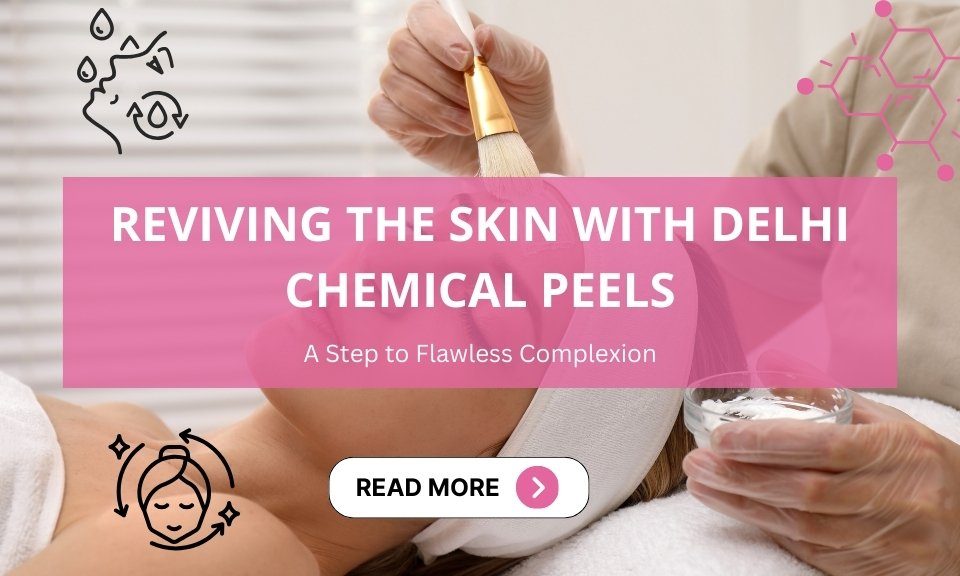- Feel Free To Call Us: +91 9311691081
- +91 9999189391
- +91 9540318080
- contact@dermalyn.in
Chemical Peel: The Definitive Guide to Rejuvenating Your Skin

Lip Micropigmentation: A Complete Overview
January 29, 2025
Dermalyn Aesthetics Hair Botox Treatment That Restore Your looks
February 6, 2025Chemical peels have become popular due to their safety and effectiveness in improving the appearance of the skin and treating many skin conditions. If you are considering this treatment, it is essential to understand the process, types, benefits, and aftercare to achieve optimal results. This guide will give you patient-oriented information about chemical peels, especially focusing on Chemical Peels for Hyperpigmentation and how to find a ‘Chemical Peel Near Me’.
What is Chemical Peel?
A chemical peel is a form of cosmetic therapy where a solution of chemicals applied to the skin peels it off at specific layers. Through this, it removes the old dead cells giving way to healthy, new cells. In return, new fresh skin, not to mention healthy, often evens out color and texture as well, has been given life for many through such a process, hence making its popularity as an attempt to revamp one’s image.
Why Consider a Chemical Peel?
Chemical Peels Treatment can address several skin concerns, including:
- Hyperpigmentation: Dark spots or uneven skin tone can significantly affect your confidence. Chemical peels for hyperpigmentation can effectively target these areas.
- Acne Scars: If you’ve struggled with acne, chemical peel treatment can help reduce the appearance of scars.
- Fine Lines and Wrinkles: Chemical Peels Treatment causes the stimulation of collagen production. This can significantly reduce the presence of fine lines.
- Sun Damage: The harmful effects of premature aging caused due to regular sun exposure can be reversed with the help of Chemical Peels Treatment.
Types of Chemical Peels treatment
Knowing the various kinds of Chemical Peels Treatment can help you identify the right type for your specific needs:
Superficial Peels
- What They Are: These are superficial peels using alpha-hydroxy acids, such as glycolic acid.
- Ideal For: Fine lines, dryness, and slight discoloration.
- Frequency: It can be repeated every to five weeks.
- Recovery: The recovery is minimal. Most patients resume normal activities the same day.
Medium Peels
- What They Are: They involve more aggressive chemicals like TCA to reach deeper skin layers.
- Ideal For: This can correct moderatevide kles, acne scars, and an uneven skin tone.
- Frequency: May need more than one visit to achieve the desired effect.
- Recovery: Redness and peeling will last for about a week.
Deep Peels
- What They Are: These are stronger agents, such as phenol, and are typically used for major skin problems.
- Best For: Deep wrinkles, scars, or precancerous lesions.
- Frequency: Usually only one time because they are so intense.
- Recovery: Downtime is high; healing may take up to three weeks.
What to Expect During Your Chemical Peel?
Pre-Treatment Consultation
Before undergoing a chemical peel, schedule a consultation with a qualified dermatologist. During this visit:
- Discuss your skin concerns and goals.
- Review your medical history and any medications you’re taking.
- Determine which type of peel is best suited for you.
The Procedure
On the day of your peel:
- Cleansing: Your skin will be thoroughly cleansed to remove oils and impurities.
- Application of Solution: Depending on the type of peel, the dermatologist will apply the chemical solution using a brush or cotton pad.
- Sensation During Treatment: You may feel slight stinging or warmth when applied. For medium and deep peels, other precautions such as cooling compresses may be utilized.
- Duration: The whole procedure takes around 30 minutes to an hour.
Post-Treatment Care
Following your peel, keep in mind the following care tips:
- Use topical creams or ointments as advised by your dermatologist.
- Avoid direct sun exposure; you will need to apply sunscreen daily to protect the healing skin.
- Drink plenty of water and follow a gentle skin care routine.
Recovery Timeline
Recovery depends on the type of peel:
- Superficial Peels: Recovery is around 3–7 days; you may experience some redness and peeling.
- Medium Peels: Recovery is about 7–14 days; you will peel considerably during this period.
- Deep Peels: Full recovery may take as long as three weeks; the redness and swelling will likely occur at first.
Finding a Chemical Peel Near You
Here are some suggestions if you search for a Chemical Peel Near Me:
- Find Local Dermatologists: Seek board-certified dermatologists who have good reviews for performing cosmetic treatments using chemical peels.
- Consultations: Make sure they provide consultation sessions so that you can present your needs for them to treat with a chemical peel.
- Facility Standards: Select clinics that have excellent standards of hygiene and patient care when performing the chemical peels.
- Ask Questions: Do not be afraid to ask about their experience with chemical peels and what you can expect from the treatment.
Conclusion
Chemical peels are the best solution to a variety of skin problems especially hyperpigmentation and signs of aging. Knowing the different types of chemical peels, what to expect during treatment, and how to care for your skin afterward can make you a better decision-maker about your skincare journey. Consult only with qualified professionals who can guide you through the process tailored to your needs. With proper care and attention, Chemical Peels for Hyperpigmentation, among other issues, can guide you toward getting healthier-looking skin that boosts your confidence. Whether you’re looking for “Chemical Peel Near Me” or are just exploring this option for rejuvenation, keep in mind that informed choices make all the difference to have beautiful results!




